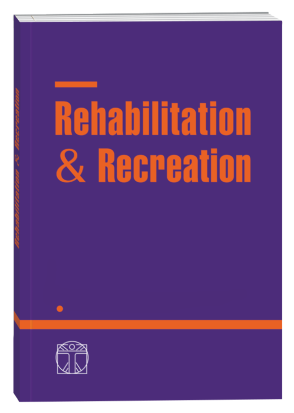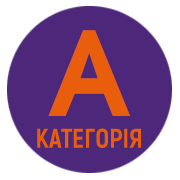BIOMARKERS FOR ASSESSING THE MECHANISMS OF RE-ADAPTATION OF SPECIAL UNITS’ MILITARY PERSONNEL IN CONDITIONS OF POWER LOADS
DOI:
https://doi.org/10.32782/2522-1795.2025.19.2.29Keywords:
military personnel, re-adaptation, test load, compensatory reactions, rehabilitation, blood biomarkersAbstract
Purpose – to study the influence of different training models during long-term rehabilitation on the re-adaptation of special units’ military personnel (SUMP); to determine the most informative biomarkers for assessing the manifestations of short-term adaptation and compensatory reactions to strength loads during the re-adaptation. Material and methods. 45 SUMP aged 24–26 years were examined after injuries during longterm rehabilitation. Participants were divided into three groups of 15 servicemen. The duration of the study was 70 days. The first group used classical protocols for rehabilitation classes. The experimental models of classes for re-adaptation using the main components of power fitness were developed for the second and third groups of SUMP. Blood biomarkers were used to determine the features of adaptive and compensatory reactions to loads. Basal levels of CPK, LDH, cortisol, and testosterone in the blood of the SUMP and changes in their parameters in response to the experimental test load (Ra=0.67) were assessed. Measurements were taken at both the start and end of the study. Results. The study revealed that before the long-term rehabilitation phase the baseline levels of CPK, LDH, and cortisol in the blood of the SUMP were nearly at the upper limit of the reference range. In response to the test load, all participant groups exhibited an increase in LDH levels, a decrease in cortisol concentration, while CPK and testosterone levels remained unchanged. After 70 days of implementing the proposed training protocols, the baseline levels of biomarkers in the SUMP participants of the first group exhibited a slight reduction. The response of biochemical indicators to the test load remained consistent with the observations recorded at the beginning of the study. SUMP of the second and third groups showed a significant decrease in the baseline level of CPK, LDH, and cortisol in the blood against the background of an increase in testosterone, which indicates pronounced re-adaptation processes. In response to the load, participants in the second group exhibited a slight increase in blood levels of CPK and testosterone, whereas LDH and cortisol levels showed a significant rise. In contrast, the third group of SUMP exhibited a several-fold increase in blood levels of CPK and testosterone in response to acute stress compared to the second group. LDH and cortisol levels in the third group showed negligible changes following stress exposure. Conclusions. The use of CPK, LDH, cortisol, and testosterone in the blood as informative biomarkers is objectively only for monitoring short-term adaptation processes or manifestations of compensatory reactions in response to acute stress. The initial concentrations of these biomarkers did not provide meaningful diagnostic information, considering the previous (before injuries) high resistance to loads. The study showed that the most pronounced re-adaptation processes during long-term rehabilitation were observed under isolated exercises combined with high-intensity loads, particularly when operating within the creatine phosphokinase energy supply mode.
References
1. Biggs, A., Doubrava, M. (2019). Superficial Ballistic Trauma and Subjective Pain Experienced during Force-on-Force Training and the Observed Recovery Pattern. Mil Med. 184(11–12):e611–e615. https://doi.org/10.1093/milmed/usz061.
2. Cadegiani, F., Kater, C. (2019). Basal Hormones and Biochemical Markers as Predictors of Overtraining Syndrome in Male Athletes: The EROS-BASAL Study. J Athl Train. 54(8):906–914. https://doi.org/10.4085/1062-6050-148-18.
3. Cadegiani, F., Silva, P., Abrao, T., Kater, C. (2021). Novel Markers of Recovery from Overtraining Syndrome: The EROSLONGITUDINAL Study. Int J Sports Physiol Perform. 16(8):1175–1184. https://doi.org/10.1123/ijspp.2020-0248.
4. Chernozub, A., Tsos, A., Aloshyna, A., Korobeynikov, G., Syvokhop, E., Koval, V., Tkhoreva, I., Shashenko, M., Potop, V. (2024). Enhancing the physical education system for students with hypokinesia using power fitness technology. Journal of Physical Education and Sport. 24 (6):1417–1423. https://doi.org/10.7752/jpes.2024.06160.
5. Chernozub, A., Tsos, A., Olkhovyi, O., Ikkert, O., Koval, V., Kirychuk, Y. (2024). Comparative study of adaptive reserves of servicemen and servicemen-athletes with neuromuscular injuries after the post-acute rehabilitation. Physical rehabilitation and recreational health technologies. 9(6):468–475. https://doi.org/10.15391/prrht.2024-9(6).02.
6. Chernozub, A., Tsos, A., Olkhovyi, O., Hlukhov, I., Koval, V., Zavizion, O. (2025). Re-adaptation of functional capabilities of special unit servicemen with long-term hypodynamia caused by peripheral neuromuscular system damage. Physical Rehabilitation and Recreational Health Technologies, 10(1), 9–19. https://doi.org/10.15391/prrht.2025-10(1).02.
7. Collins, B., Pearcey, G., Buckle, N., Power, K., Button, D. (2018). Neuromuscular fatigue during repeated sprint exercise: underlying physiology and methodological considerations. Appl Physiol Nutr Metab. 43(11):1166–1175. https://doi.org/10.1139/apnm-2018-0080.
8. Conkright, W., Barringer, N., Lescure, P., Feeney, K., Smith, M., Nindl, B. (2020). Differential recovery rates of fitness following U.S. Army Ranger training. Journal of Science and Medicine in Sport. 23(5):529–534. https://doi.org/10.1016/j.jsams.2019.12.010.
9. Koval, V., Tsos, A., Olkhovyi, O., Drobot, K., Chernozub, A., & Potop, V. (2025). Overtraining syndrome in bodybuilding and the difficulty of searching for informative biomarkers for disadaptation diagnostics. Physical Rehabilitation and Recreational Health Technologies. 10(2):108–119. https://doi.org/10.15391/prrht.2025-10(2).06.
10. Korobeinikova, L., Raab M., Korobeynikov, G., Pryimakov, O., Kerimov, F., Chernozub, A., Korobeinikova, I., Goncharova, O. (2024). Comparative analysis of psychophysiological state among in physical active and sedentary persons. Journal of Physical Education and Sport. 24 (2):382–389. https://doi.org/10.7752/jpes.2024.02046.
11. McFadden, B., Cintineo, H., Chandler, A., Mastrofini, G., Vincenty, C., Peterson, P., Lovalekar, M., Nindl, B., Arent, S. (2024). A Sex Comparison of the Physical and Physiological Demands of United States Marine Corps Recruit Training. Mil Med. 189(2):74–83. https://doi.org/10.1093/milmed/usae071.
12. Potop, V., Manolachi, V., Chernozub, A., Kozin, V., Syvokhop, E., Spivak, A., Sharodi, V., & Jie, Z. (2023). Changes in circumference sizes of bodybuilders using machine and free weight exercises in combination with different load regimes. Health, Sport, Rehabilitation. 9(2), 74–85. https://doi.org/10.34142/HSR.2023.09.02.06.
13. Potop, V., Mihailescu, L., Mahaila, I., Zawadka-Kunikowska, M., Jagiello, W., Chernozub, A., Baican, S., Timnea, C., Ene-Voiculescu, C., Ascinte A. (2024). Applied biomechanics within the Kinesiology discipline in higher education. Physical Education of Students. 28(2):106–19. https://doi.org/10.15561/20755279.2024.0208.
14. Salonen, M., Huovinen, J., Kyröläinen, H., Piirainen, J., Vaara, J. (2019). Neuromuscular Performance and Hormonal Profile During Military Training and Subsequent Recovery Period. Mil Med. 184(3–4):e113–e119. https://doi.org/10.1093/milmed/usy176.
15. Soler-López, A., Moreno-Villanueva, A., Gómez-Carmona, C., Pino-Ortega, J. (2024). The Role of Biomarkers in Monitoring Chronic Fatigue Among Male Professional Team Athletes: A Systematic Review. Sensors (Basel). 24(21):6862. https://doi.org/10.3390/s24216862.
16. Spiering, B., Clark, B., Schoenfeld, B., Foulis, S., Pasiakos, S. (2023). Maximizing Strength: The Stimuli and Mediators of Strength Gains and Their Application to Training and Rehabilitation. Journal of Strength and Conditioning Research. 37(4):919–929. https://doi.org/10.1519/JSC.0000000000004390.
17. Uphill, A., Kendall, K., Baker, B., Guppy, S., Brown, H., Vacher, M., Nindl, B., Haff, G. (2025). The physiological consequences of and recovery following the Australian Special Forces Selection Course. Appl Physiol Nutr Metab. 50:1–13. https://doi.org/10.1139/apnm-2024-0117.
18. Vine, C., Runswick, O., Blacker, S., Coakley, S., Siddall, A., Myers, S. (2024). Cognitive, Psychophysiological, and Perceptual Responses to a Repeated Military-Specific Load Carriage Treadmill Simulation. Hum Factors. 66(10):2379–2392. https://doi.org/10.1177/00187208231214216.
Downloads
Published
How to Cite
Issue
Section
License

This work is licensed under a Creative Commons Attribution-NonCommercial-NoDerivatives 4.0 International License.





